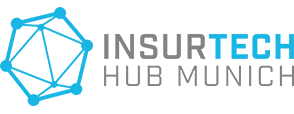
1. How does your business model work and what is your USP?
At vlot we help insurance carriers to make life insurance more attractive and better understandable for the end-customer while at the same time increasing their effectiveness and efficiency when it comes to distributing them – be it direct to consumer, via agents and brokers or through bancassurance channels.
Our USP lies in the overall, end-to-end approach starting with showing the end-customer what he/she and their family actually need today in terms of life risk coverage, then seamlessly providing access to a fully tailored life insurance solution that can close an identified gap. Most importantly, we capture and provide proactive engagement when it makes sense to adjust that coverage as life unfolds. vlot is present in context of life events and decisions that have an impact on the level of risk coverage needed (never over- or under-insured) – such as taking out a mortgage loan, getting married or giving birth to a baby.
2. Why did you join the InsurTech Europe powered by Plug and Play Accelerator Program?
When we applied for the program, we did so based on an already existing, fruitful relationship we’ve been maintaining with one of the representatives of the Plug and Play Munich team. Combined with a hands-on experience of how powerful the Plug and Play ecosystem can be for start-ups (as part of the InsurTech Batch 5 in Silicon Valley), we did not hesitate to seize the opportunity to join the program in Munich. Our main goal was to get access to meaningful deal-flows with innovative insurance carriers that are swift in decision making when it comes to defining specific PoCs (proof of concepts) and running pilot projects.
3. What is your biggest takeaway from the program and would you recommend other startups to join?
Without any doubt this is the high number of deal-flows with major insurance players, both in Germany but also Europe in general. These were also attended by highly ranked key decision makers – which makes the finding and evaluation phase (as regards to mutual cooperation opportunities) the most effective and efficient one for all involved parties. To the 2nd part of the question, we’ve proactively recommended the program to a number of start-ups with one main reason: unbeatable efficiency and effectiveness in match-making with B2B partners.
4. What do you believe is the biggest challenge for innovation in life insurance?
There isn’t a simple answer to this question. I believe it’s a mixture of multiple factors. Death and disability are uncomfortable topics to think and talk about. The pure push-sales approach of the last decades of life insurance distribution has left a lot of customers with a negative experience. Adding the complexity of both risk assessment client-side (how much for how long for whom?) and the challenges of underwriting accident and illness risks, life insurance is a hard nut to crack for sure. This, on the other hand, is where we see the full potential of vlot unfolding to add value to the end-customer, the (re-)insurance company and any other third-party involved like banks etc.
5. In your opinion, what can established insurance and reinsurance companies do to simplify collaborations with InsurTech startups?
It’s often very difficult for a startup to evaluate the true mindset and strategy of an incumbent. The first touchpoint is usually a digital scout or a head of transformation. These people usually see the potential very quickly and start activating the decision makers within their company. This is when it gets more and more difficult to push through. Disruption is always accompanied by “pain” in terms of radical change within existing strategies and processes. So in the end, it’s a question of mindset and willingness to change. Not only in the IT department… Across all departments of an insurance carrier. I think therein lies one of the biggest dangers for startups: setting valuable resources aside for unfruitful collaboration efforts with semi-motivated incumbents. On my wishlist is a true and standardized fast-track evaluation process that delivers fast and truthful feedback to startups as to how a collaboration might evolve.
6. Munich provides one of the fastest growing digital ecosystems for insurance innovation. How is your experience here compared to other startup hotspots as Silicon Valley, London or Tel Aviv?
We think the dynamics and high pace we experience in Munich are unique. This might be due to the fact that a number of the Program Partners are located in the city. Comparing Munich with Zurich (Kickstart Accelerator) and Geneva (Fusion) is difficult, as each of these have a different focus. We do notice though that the German market is a lot more open and readier for change than the Swiss one. Both the banking and insurance sector are slow to adapt here. We don’t even have PSD2.
In the Silicon Valley Program, where the major insurance Corporate Partners are spread all over the US, it’s slightly different. Nevertheless, it’s impressive to see with what frequency these are visiting the Plug and Play headquarters – which brings great deal-flow opportunities and general visibility to the start-ups.





